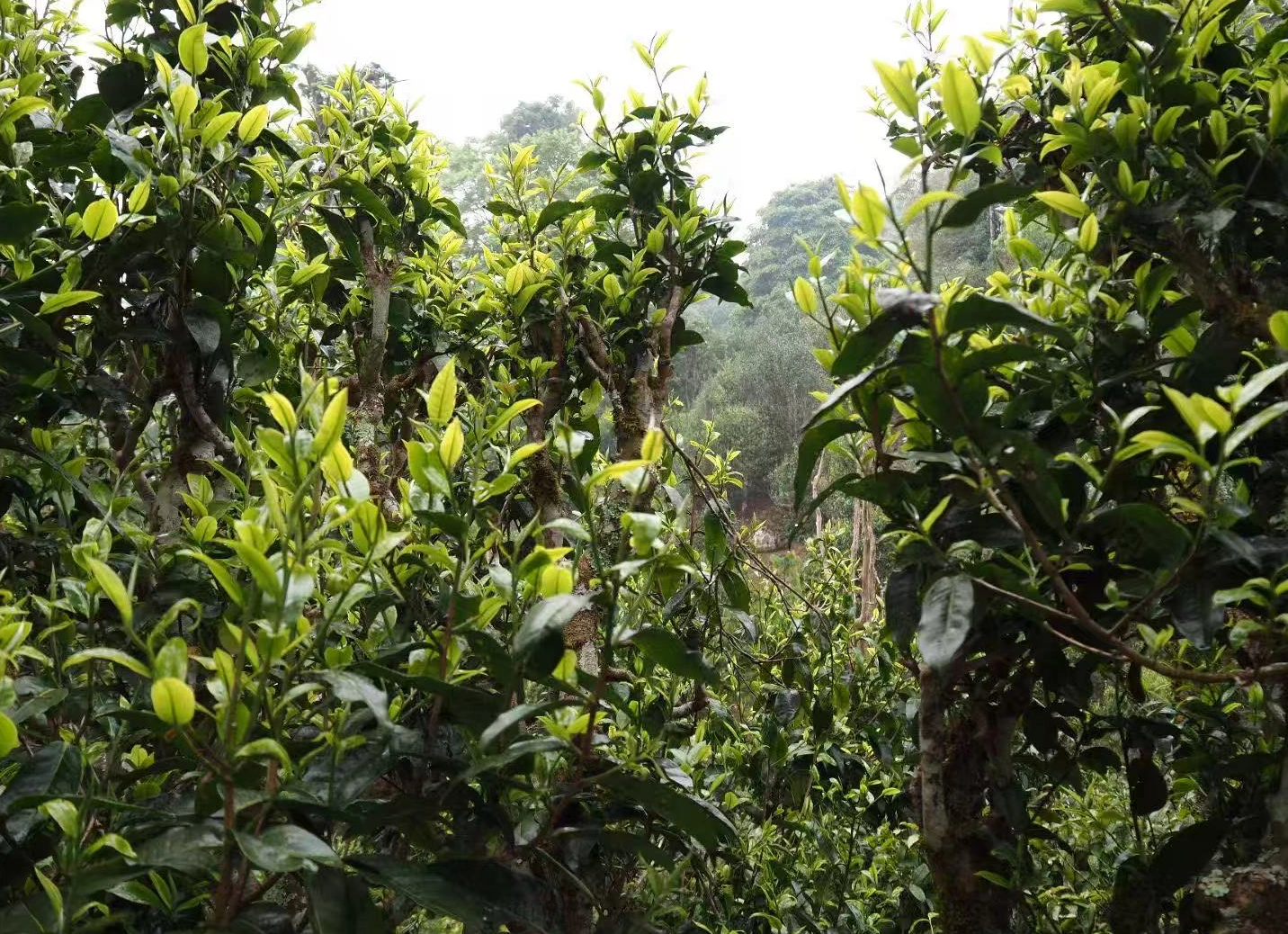Picture yourself wrapping your hands around a warm tea bowl, steam curling upward with notes of humid earth, sweet dried fruit, and ancient timber. One sip, and the world seems to slow—your senses awakened to the age-old craft of Chinese pu erh tea. In this guide, you’ll journey from pu erh’s storied origins along the Ancient Tea Horse Road to its modern revival in connoisseur circles worldwide.
You’ll learn what makes raw (sheng) and ripe (shu) pu erh so irresistible, uncover the lush health benefits tucked within each leaf, master three brewing techniques—from precise gongfu to casual Western steep and inventive cold brew—and discover five must-try pu erh teas hand-picked from Tanbiwencha for 2025. Let your senses guide you as tradition meets indulgence in every cup.
What Makes Chinese Pu Erh Tea So Special?
Chinese pu erh tea is unlike any other. After harvest, the large Yunnan leaves are withered, rolled, and sun-dried. At this point they split into two paths:
- Raw (Sheng) Pu Erh ages naturally. Over years—sometimes decades—the leaves slowly ferment in cool, humid cellars, transforming bright, astringent briskness into honeyed sweetness, layered with floral undertones and mellow wood notes.
- Ripe (Shu) Pu Erh undergoes “wet-pile” fermentation: piled, moistened, and turned under controlled heat. In months, the leaves mimic decades of natural aging, yielding dark, velvety liquor with cocoa-like richness.
What unites both styles is time’s alchemy. Microbes sculpt complex compounds—polyphenols into sweet esters, tannins into smooth silk—that enchant the palate and soothe the spirit.

A Taste of History: From Tea Horse Road to Tea Aficionados
Tracing back to the Tang dynasty (618–907 AD), tea cakes were compressed for mule trains traversing the Ancient Tea Horse Road. Soldiers and traders prized pu erh for warmth, metabolism-boosting energy, and ease of transport. By the 13th century, pu erh was a diplomatic gift in imperial courts. Fast forward to today, and pu erh has captivated global connoisseurs—from dimly lit Yunnan tea houses to Silicon Valley’s sleek tea labs—where tea sommeliers curate vintages by year, region, and tree age.
Health Benefits That Steep Deep
Beyond its sensual allure, pu erh offers science-backed wellness perks:
- Digestive Support & Metabolism: Fermentation produces enzymes that gently break down fats, making pu erh a beloved post-meal tonic.
- Cholesterol Management & Heart Health: Clinical studies show regular pu erh consumption can lower LDL (“bad”) cholesterol and support healthy blood flow.
- Antioxidant & Weight-Supportive: Rich in theaflavins and catechins, pu erh battles oxidative stress and may aid in weight management by regulating lipid profiles.
Every cup becomes an invitation to nourish body and mind—an indulgence that aligns with well-being.
Exploring Flavor: The Profile of Pu Erh
Pu erh’s flavor evolves both within a single steep and across seasons of aging:
- Young Sheng: Crisp, grassy top notes give way to brisk citrus and a hint of camphor.
- Mature Sheng: Over 10+ years, those sharp edges round into honey, dried apricot, and a whisper of jasmine.
- Shu (Ripe): Rich chocolate, warm tobacco, and dark fruit underscore a silky mouthfeel that can linger for minutes.
Learn to read a pu erh’s aroma—damp forest floor, molasses, or camphor resin—and you unlock a Tea Whisperer’s superpower.
Brewing Chinese Pu Erh Tea
Gongfu Style: Precision Ritual
- Measure & Rinse
- Use 5 g of leaves for 100 ml water.
- Rinse with 100 °C water for 5 s, quick-discard to awaken the leaves.
- Timed Infusions
- Steep 8–10 s for the first infusion; add 2–3 s each subsequent round.
- Expect 8–15 steeps: early sips sparkle with malt and floral vitality; later rounds reveal toffee, tobacco, and forest musk.
- Senses On
- Watch the liquor transition from pale amber to deep garnet.
- Inhale steam: do you sense honeyed dates, wood smoke, or citrus peel?
- Feel the texture: a silky coating that teases the palate.
Western Style: Effortless Enjoyment
- Ratio & Vessel
- 2 g leaves per 200 ml hot water in a teapot or infuser.
- Long Soak
- Steep 3–5 minutes for bright briskness, 6–8 minutes for mellow depth.
- No need to fuss—ideal for morning routines or casual sharing.
Cold Brew & Iced Techniques
- Cold Brew
- Combine 5 g leaves with 300 ml cold water in the fridge for 8–12 hours.
- Result: smooth, low-bitterness tea perfect for summer refreshment.
- Iced Pu Erh
- Brew double-strength with hot water, cool slightly, pour over ice.
- Add a twist of lemon or mint for an invigorating twist.
Storage & Aging: Nurturing Time’s Magic
To cultivate pu erh’s full potential, honor its terroir in storage:
- Humidity & Temperature
Keep at 60–70% RH and 20–25 °C—stable, breathable, and odor-free. - Containers
Unglazed clay jars or woven bamboo baskets allow gentle airflow without contamination. - Rotation & Inspection
Every 3–6 months, rotate cakes and sniff for sweet-earth aromas; avoid moldy or sour notes.
With proper care, your pu erh collection becomes a living library, each cake a timepiece of flavor.
How to Choose & Buy Authentic Pu Erh Tea
Spot real pu erh amid imitators:
- Cake Labels & Year Marks
Look for harvest year, factory code, and region stamp. - Leaf Quality
Whole, intact leaves—no excessive stems or fannings. - Trusted Vendors
Choose sellers with transparent sourcing and third-party testing (e.g., TVOC, pesticide-free).
Invest wisely: a 10–30-year-old cake can deliver sublime drinking without the premium of century-old vintages.

Top 5 Chinese Pu Erh Teas to Try in 2025
Based on Tanbiwencha’s curated selection, these five teas offer a spectrum of pu erh excellence:
- 2015 Brown Mountain Ancient Tree Raw Pu Erh (10-Year Sheng)
- Flavor: Orchid blossom → damp stone → dark honey finish
- Why Try: Wild arbor trees yield authentic terroir.
– View on Tanbiwencha
- 1998 Xiaguan 6533 Ripe Pu Erh Cake (27-Year Shu)
- Flavor: Caramel, wood smoke, lingering huigan (sweet return)
- Why Try: A legendary recipe with auction-worthy pedigree.
– View on Tanbiwencha
- 1999 Mini Tuo Ripe Pu Erh (26-Year Mini Shu)
- Flavor: Silky malt, gentle umami, crisp finish
- Why Try: Portable nuggets from premium Yunnan leaves.
– View on Tanbiwencha
- 2004 FuHua Red Stamp Raw Pu Erh Brick (21-Year Sheng)
- Flavor: Smoky undercurrent → full-bodied soup → soft sweetness
- Why Try: Brick form allows slow, even maturation.
– View on Tanbiwencha
- 1990s Aged Pu Erh Tea Lumps (30+-Year Double-Aged Shu)
- Flavor: Caramel fig, resinous earth, medicinal-broth mouthfeel
- Why Try: Ultra-rich probiotics and collector’s patina.
– View on Tanbiwencha
Frequently Asked Questions
What’s the difference between raw and ripe pu erh?
Raw pu erh ages slowly in its natural state; ripe pu erh is wet-pile fermented for quicker maturation.
How long can you age pu erh safely?
When stored properly, pu erh can improve for 50+ years without spoilage.
Can I reuse leaves for multiple infusions?
Absolutely—quality pu erh yields up to 12 steeps, each unveiling new layers.
Conclusion & Next Steps
Chinese pu erh tea is a sensual voyage through time, terroir, and taste. By understanding its fermentation, savoring its evolving profile, mastering brewing rituals, and selecting authentic cakes, you unlock a universe of earthy aromas and deep-core sweetness. Begin your 2025 pu erh collection with Tanbiwencha’s top picks, immerse yourself in gongfu ceremonies, or simply steep a pot at dawn. Each cup brings you closer to the heart of China’s tea heritage—sip by sensuous sip.



